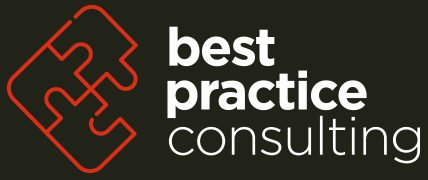Are your staff giving 100% to the organisation? Do they feel valued and appreciated? Do they show-up each day with passion and purpose?
If you answered "no" to any of these questions – your organisation has an employee engagement problem. But don't worry - you are not alone. The Hewitt Best Employer Survey results suggest that engaging staff is a big challenge for most Australian organisations. According to their most recent survey – the national average for employee engagement is only 54%.
So why is employee engagement a problem? In Australia unemployment is running at historical lows, we are experiencing an unprecedented skills shortage in various sectors and many organisations have failed to create workplace environments which truly engage staff. These factors have resulted in a highly mobile workforce, which is costly to the organisation in terms of productivity and profit.
The secret to employee engagement is capturing the hearts and minds of your employees. The difficult part is discovering what truly inspires staff to perform above and beyond. Once you discover how to engage your staff the benefits include: a happy and healthy work environment, a more productive team and a more profitable business.
Here are ten tips on creating and sustaining employee engagement.
1. Let go of the negative thoughts you have about your employees. Each person in the team has unique knowledge, skills and something valuable to contribute. Rather than focussing on the weaknesses of a staff member it is important to focus on their strengths and place staff in positions where their strengths are best utilised.
2. Be nice to your staff. Noticing and acknowledging the contribution of your employees and treating them well will have a profound impact. However, staff usually forget compliments quickly, so it essential to give these out regularly and in an authentic way. Also be aware that people like to be noticed in different ways. Some prefer a quiet praise. Others prefer open acknowledgment in front of their peers.
3. Get to know your staff. Show an interest in your people and genuinely get to know them. Understanding the stress factors and motivational drivers for each staff member can be extremely useful in managing them. This will make you more approachable making you the first person they come to when there is a problem. In addition, introducing some light hearted activities into the workplace can change the tone and mood of the organisation.
4. Use clear and regular communication. Staff like to know 'what is going on and why', especially when changes are planned. Regular feedback to staff helps reduce damaging corridor gossip that can be an undercurrent of misinformation. In addition, it is essential to clearly communicate your expectations of staff so that they can be productive and meet targets.
5. Hold performance reviews. Staff are always keen to receive formal feedback on their progress. Using a twice yearly – 360 degree review process (i.e. feedback from superiors, peers, support staff and some clients) is ideal. The process is also a great way of formally acknowledging the contribution of staff. When staff do not receive feedback and do not see any future with the organisation, they quickly start to look for greener fields.
6. Equipping your staff with the right tools. Following a performance review, training needs should be identified and appropriate courses need to be selected for staff to undertake. Ongoing training programs show staff that the organisation is interested in and responsive to their needs for improvement. You also equip staff with the skills and tools to perform at their best. Check out our 90-minute Bite Size Learning and bespoke training courses.
7. Offer career progression. An important driver in keeping staff engaged is to offer a career development program for each staff member. Opportunities need to be identified for appropriate staff and they need to be groomed for positions via training and mentoring.
8. Provide inspiring leadership and give individual autonomy. When new employees join an organisation, leaders need to impart the values and aspirations of the business. Staff look to management for leadership and direction, but this does not mean they need to be monitored every step of the way. No one enjoys being micro-managed! Instead inspire excellence in your staff and allow them the freedom and autonomy to deliver on tasks.
9. Remuneration and incentives. So that salaries are fair they should be monitored on an ongoing basis to keep track of changes in the market for different job roles and experience levels. Employers should also adjust salaries yearly for those staff not changing their roles and responsibilities, to ensure staff don't fall behind. Many workplaces have also introduced incentive payments that are linked both to the person's individual performance and the overall performance of the organisation. The process for calculating incentive payments needs to be transparent and clearly communicated to staff. Incentives are an important recognition tool and a way of sharing the organisations success with staff due to their efforts.
10. Flexible working arrangements. Lifestyle and work-life balance are becoming important for today's workforce and employers need to adapt and offer greater flexibility. Some workplaces offer flexible working arrangements or have wellbeing and lifestyle programs in place, such as gym membership and cinema admission for their staff. These programs demonstrate the caring nature of the organisation.
Our experience with clients is that those organisations that have processes in place to manage the above tips are more successful because their staff are engaged and committed. Not surprisingly, their staff work harder, perform that extra 10%, accomplish more, are more loyal and speak positively about the organisation.
In addition to Bite Size Learning and bespoke training, we also provide DiSC team building and workshop facilitation services to help elevate employee engagement. If you want to talk further get in touch with us today.

